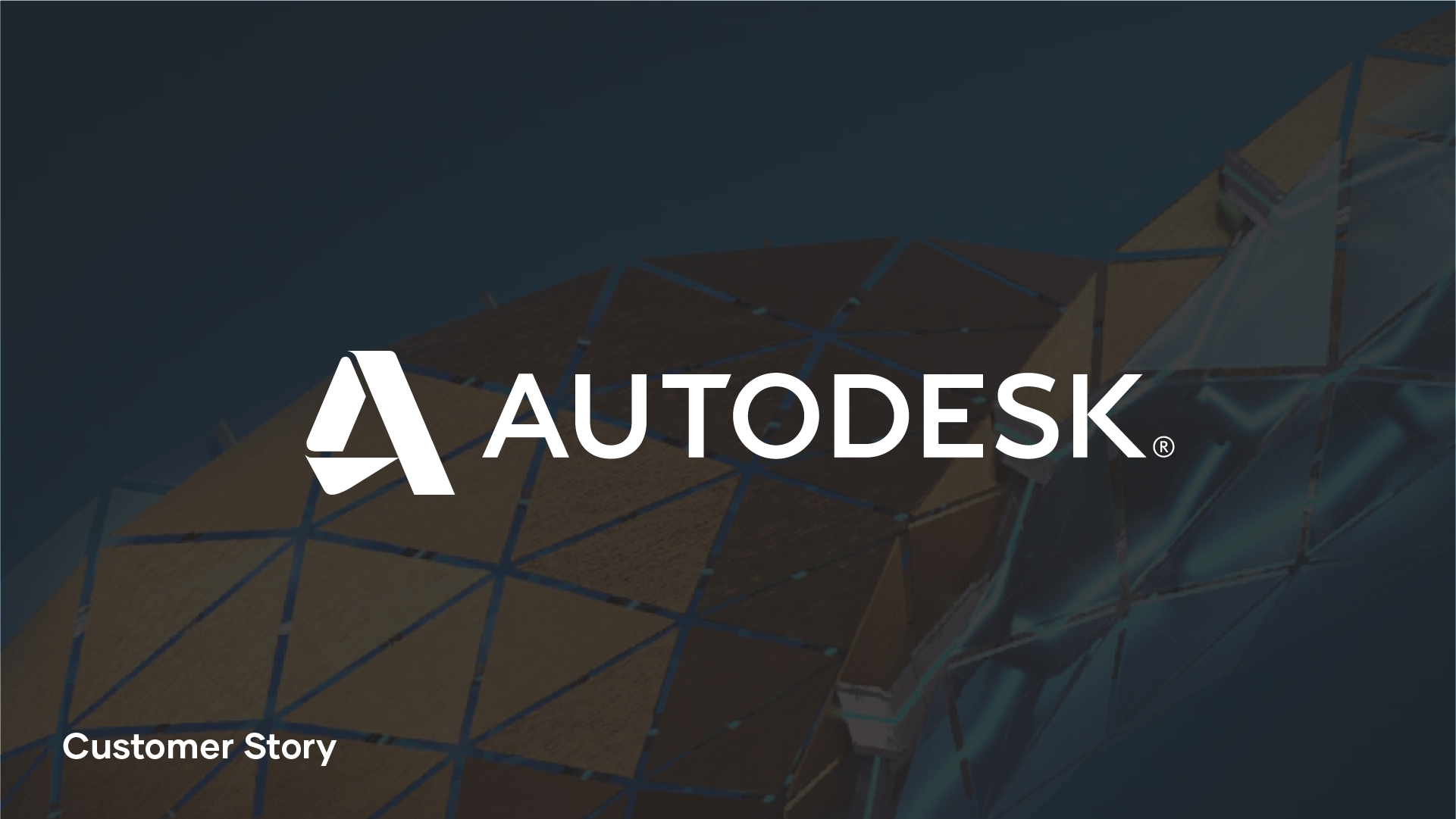For nearly 40 years, Autodesk has enabled the most creative minds to build the most creative things. More than 100 million people around the world rely on the company’s comprehensive suite of computer-aided design (CAD), building information modeling (BIM), and 2D/3D modeling software to design and deliver everything from high-performance sports cars to futuristic skyscrapers and virtually any imaginable product in between.
But as markets, consumer preferences, and business demands continue to evolve, so must the company’s products. The Autodesk Research team — a select group of researchers and engineers — is dedicated to exploring tools, technologies, and processes that help both the company and its global customers work and innovate more efficiently.
“The professionals who use our software are experts in their fields and have an intimate knowledge of how every aspect of their project is supposed to look and work,” says Thomas Gale, research engineer at Autodesk. “Our primary goal was to create new workflows that would help reduce prerequisite knowledge and other points of friction. We hope that this will enable users to define the optimal properties for whatever they’re building faster, more efficiently, and with a lot less effort.”
Solving Incalculable Complexity
Reimagining software user experiences and workflows is never a simple proposition, especially when it’s for such widely used and revered products. Gale, whose main focus is on the company’s manufacturing business unit, had been researching ways to shortcut user processes for determining the optimal design and cost factors for machining and cutting tools.
“There are so many different variables that go into designing those assets, like the types of materials they’ll be cutting, calculating ideal cut paths, and a range of other settings that could take days or weeks to compile manually,” he says. “But trying to eliminate that headache for our users by performing the searches and running the calculations ourselves wasn’t really feasible on local networks and machines because the sheer volume of space and compute required is far more than what most local infrastructure can handle.”
Autodesk’s famously collaborative culture led Gale to a presentation by Marco Fiocco, an Autodesk software development manager who had been working on developing platforms and toolkits for distributed computing. The platform was intended to help various teams in the organization — including Gale’s — to simultaneously run massive computational searches and calculations at scale in a containerized environment.
However, the legacy Java orchestrator Fiocco had been using combined compute and orchestration, making it challenging to maintain and scale without a large team of operators. Instead, he wanted to source individual tools for both heavy parallel computing and for orchestration, and then integrate them to create a lighter weight, but equally powerful platform.
“The original version of our orchestrator simply turned out to be a little too advanced and too complex for us to maintain right now with such a small team,” Fiocco explains. “We wanted something that balanced the power and capabilities of that tool without having to buy an expensive hosted solution like Kubernetes or reinvent the wheel by custom developing it ourselves.”
Conducting the Silent Exploration
Eager for a more flexible, agile orchestration solution to power their exploratory work, Fiocco’s colleague had recommended considering HashiCorp Nomad, which he’d read about in HackerNews. Nomad is a scalable, hosted solution that features simple, flexible, and production-grade orchestration capabilities that allow Gale’s and other teams to work across containerized environments and any public or private cloud for maximum efficiency and scale.
The open source and vendor-agnostic HashiCorp solution makes it easier to mix and match resources, incorporate additional third-party tools, and generally adapt the environment to the changing needs of research teams across the company’s business units.
“One of the great things about Nomad is that it supports hybrid- and multi-cloud operations right out of the box,” Fiocco says. “We’ve beefed up some of our on-premises machines so we could run a Nomad cluster spanning those machines and our private cloud, as well as tack on Cadence through AWS to run stateful workflows by layering HashiCorp Consul over top to coordinate it all.”
Now, Gale and other researchers can easily configure a Nomad file to schedule a range of compute-heavy simulations, calculations, and other exploratory activities on any platform they choose — and coordinate it all from a single interface, with full visibility and transparency.
“I’m a complete beginner when it comes to distributed computing and orchestration,” Gale says. “Nomad virtually eliminates barriers to entry for developers who don’t have cloud computing expertise and makes it really easy to connect to the cluster, configure it, and run my jobs while having full visibility into the jobs’ status so I can restart them if need be.”
Fiocco and Gale agree that while their present work is exploratory and affects a small section of the research organization, the long-term objective is to keep Autodesk innovative, ahead of emerging customer demands, on the leading edge of technological trends.
HashiCorp tools have opened new doors to finding faster, smarter, and more efficient ways of working already. And the team plans to investigate the HashiCorp Cloud Platform — a fully managed cloud offering that automates deployment of HashiCorp products on any cloud provider — which would further their discovery capabilities and support the changing needs of the next generation of makers and innovators around the world.
Solution
Autodesk Research is using HashiCorp Nomad for scalable, maintenance-free workflow orchestration across cloud and on-premises environments.
Outcomes
- Replaced homegrown orchestrator with efficient, automated orchestration
- Enabled multi-cloud workflows and executing native binaries as well as VMs and containers
- Freed the team to focus on running simulations
- Established a proven foundation for company-wide product enhancement
About Autodesk Research
Autodesk makes software for people who make things. The company is working to help solve some of the world's most complex design and manufacturing problems, from pressing ecological challenges to the development of scalable smart infrastructure. Designers and manufacturers use Autodesk tools to not only create plans for buildings, for example, but also to simulate their impact on the environment and track their performance over time. Autodesk’s design and make software is used in the architecture, engineering, construction, media and entertainment, and manufacturing industries.
Autodesk Research is unique in that it is dedicated to innovation and discovery across different time horizons to help solve pervasive problems. Its interests range from methods to help users learn powerful digital prototyping tools to visualization and simulation techniques which enable designers to achieve new levels of performance. Advancing the state of the art in human-computer interaction, computer graphics, and digital design technology, it collaborates openly with researchers and partners at leading universities and organizations around the world.







